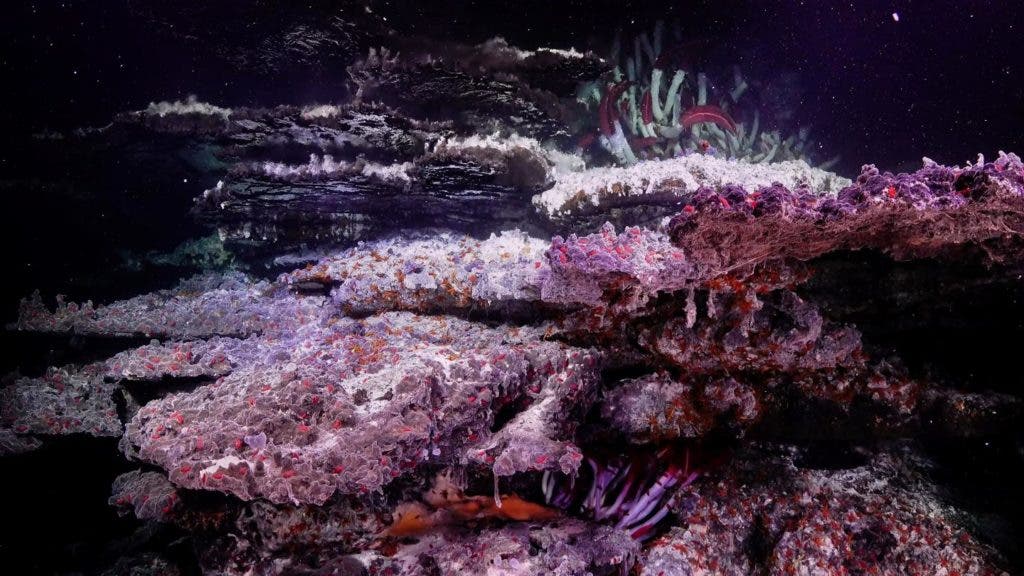While exploring two types of unusual deepwater environments (hydrothermal vent and cold seep environments), researchers came across something unexpected: reflective water pools.
The expedition was an unprecedented and thorough study of hydrothermal and gas plumes — two environments which act as thriving oases in otherwise cold and unfriendly waters. The team used advanced technology that included 4K deep-sea underwater cameras and radiation tracking devices, as well as sediment and fluid samplers working via a remotely operated vehicle.
In this surreal world, researchers discovered large venting mineral towers reaching up to 23 meters in height and 10 meters across. Due to superheated hydrothermal fluids beneath them (366ºC), it creates a mirror-like illusion.
This feature, while visually stunning, wasn’t the most impressive thing for researchers: the waters in the area were laden with minerals and metals, and were generally highly sulfidic — yet these sites were teeming with biodiversity and potentially novel fauna. Life, as they say, finds a way.
“We discovered remarkable towers where every surface was occupied by some type of life. The vibrant colors found on the ‘living rocks’ was striking, and reflects a diversity in biological composition as well as mineral distributions,” said Dr. Mandy Joye, who led the interdisciplinary team.
A discarded Christmas tree on the bottom of the sea

But researchers also came across a stern reminder of how we humans are affecting these pristine environments: a lot of trash.
“Unfortunately, even in these remote and beautiful environments we saw copious amounts of trash including fishing nets, deflated Mylar balloons, and even a discarded Christmas trees. This provided a stark juxtaposition next to the spectacular mineral structures and biodiversity.”
In addition to analyzing and describing these unique settings, which likely hold numerous species new to science, researchers also hope to inspire people to care more about preserving these environments
“It is a different world down there. Each dive feels like floating into a science fiction film,” said Schmidt Ocean Institute Cofounder Wendy Schmidt. “The complex layers of data we’ve collected aboard Falkor during this expedition will help tell the story of this remote place and bring it to public attention. Witnessing these remarkable oceanscapes, we are reminded that although they are out of our everyday sight, they are hardly immune from human impact. Our hope is to inspire people to learn more and care more about our ocean.”
The team will publicly release the results of the samples, in the attempt of gaining a more complete understanding of the Gulf of California system.
Was this helpful?



